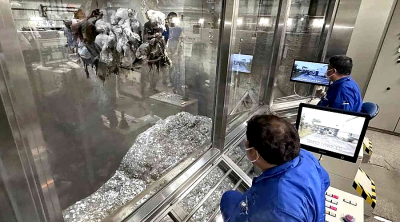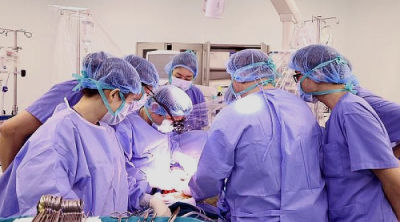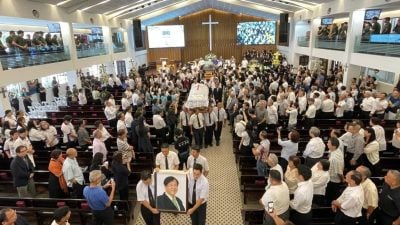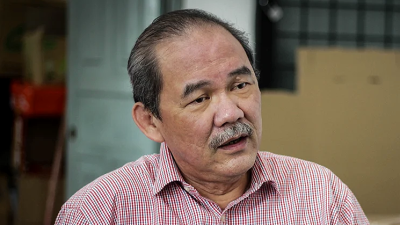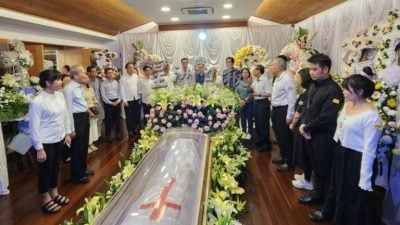TOKYO: More and more local governments are allowing employees who cannot find places to care for their children to bring them to the workplace so that they can work while watching over their children.
The aim is to secure good talent by helping employees achieve a balance between childcare and work.
At the same time, such governments are seeking ways to prevent the system from affecting work operations.
To secure talent
On the morning of Aug 5, Junya Sagawa, 35, who works at the Tokyo metropolitan government’s Bureau of Industrial and Labor Affairs, entered the office with his 1-year-old second daughter Aoi and took a seat with a nervous expression.
His wife, who is on childcare leave, had to deal with an urgent issue. While they asked a local day care facility to look after their daughter, its temporary childcare service was fully booked.
Since Sagawa needed to have a face-to-face meeting for work, he decided to bring his daughter with him to the workplace.
Aoi was in a buggy and played with a stuffed toy next to Sagawa as he concentrated on his work.
To prevent his daughter from getting bored, Sagawa sometimes held her and walked around the office.
He was able to finish his planned work without trouble.
“I am relieved that she has been quiet,” he said.
In April, the Tokyo metropolitan government allowed employees working in its Shinjuku main offices to bring their children to the workplace in case of unavoidable circumstances.
The system applies to children from infancy to age 9, the third grade of elementary school.
Sagawa is one of three employees in the bureau who have used the system so far.
The purpose of the system is to retain excellent employees. According to the Tokyo government, the number of prospective university graduates taking employment examinations for clerical positions has dropped by half over the past five years, due to the low birth rate and other reasons. It fell from 3,838 in fiscal 2019 to 2,137 this fiscal year.
The metropolitan government’s Human Resources Division says it will develop an environment to enable employees to balance childrearing and work in order to enhance competitiveness in employee recruitment.
Changes in the workplace
According to the metropolitan government and other sources, at least five municipalities across the country have systems to allow employees to bring their children to work.
The first municipality to introduce the system was Toyoake, Aichi Prefecture. The municipal government fully introduced the system in May 2023 after a one-month trial period.
During the trial period, when there were no conditions for use, 23 employees used the system.
When it was fully introduced, the municipal government set the condition that workers could use the system only when there was no other place to look after their children.
After the condition was introduced, no one used the system for a while.
The municipal government took steps to promote the system and now one or two employees bring their children to work each month, according to the government.
There have been changes in the workplace atmosphere as well.
The Toyoake municipal government conducted a survey on its employees before starting the trial period and asked whether they would be able to accept children in the workplace.
While 34% said “Yes,” those who said “No” also accounted for 34%.
However, in a survey conducted after the trial period, 70% of those who had users of the system around them answered “Yes”.
The Toyoake municipal government introduced the system for the purpose of developing a community friendly to child-rearing households.
“Employees who bring their children to the workplace and also those around them gradually understand that the presence of children in the workplace does not affect work operations,” a senior government official said, showing expectations that more private companies will introduce a system of this kind.
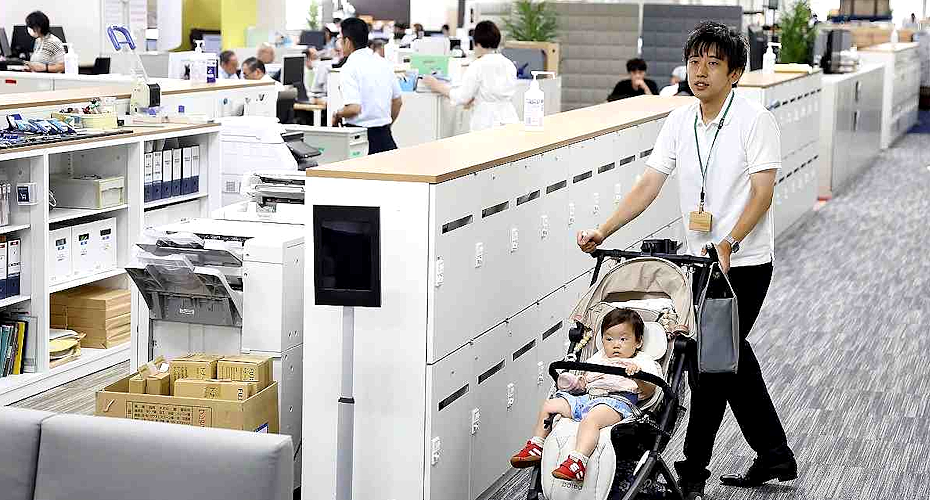
Making rules
However, work at local governments often requires delicacy. The Takayama municipal government in Gifu Prefecture, which introduced the system in January, asks employees to keep their children from accidentally seeing personal information on documents by working in places other than their offices, such as meeting rooms.
The municipal government also made rules such as prohibiting employees from asking colleagues to watch over their children.
In Tsukubamirai, Ibaraki Prefecture, when employees bring their children to the workplace, the municipal government places a sign on the counter to announce that this is part of the municipal government’s initiative so that citizens visiting the municipal government are not confused.
Yuka Mitsuhata, the representative director of a non-profit organisation called Kozure Style Suishin Kyogikai, which promotes a balance between child-rearing and social participation, said, “Having the option of bringing children to work in case of emergency allows parents and guardians to have a sense of security.
“If administrative institutions introduce the system, it will encourage private companies to follow suit.”
“It is a prerequisite that employees should work seriously even though they are with their children.
It is important to make rules so that employees will not regard the workplace as a day care facility or bring their children without any consideration for the workplace or the children,” Mitsuhata added.
Childcare at companies increasing
Private firms are increasingly setting up company-run day care centres on their premises and elsewhere to care for the children of employees and help them balance work and family life.
The system was introduced in fiscal 2016 under the government’s company-led model.
If these day care centres meet the government’s standards, the company will receive subsidies equivalent to 75% of the day care centre development costs.
Such day care centres are unlicensed facilities but are entitled to receive subsidies almost equivalent to those provided for licensed day care centres.
The number of such care centres at companies was 871 in fiscal 2016 with a capacity of 20,284 children, but by fiscal 2022, the number increased by about five times to 4,449 with a capacity of 105,393 children, according to the public interest incorporated foundation Jido Ikusei Kyokai.
All Nippon Airways Group opened a day-care centre in Haneda Airport in April 2018. It is available from 7 a.m. to 10 p.m., year-round.
“As the airport is always in operation, we have created a system that can accommodate a variety of work styles. Employees satisfaction levels are also very high,” and official of ANA said.
ADVERTISEMENT
ADVERTISEMENT






